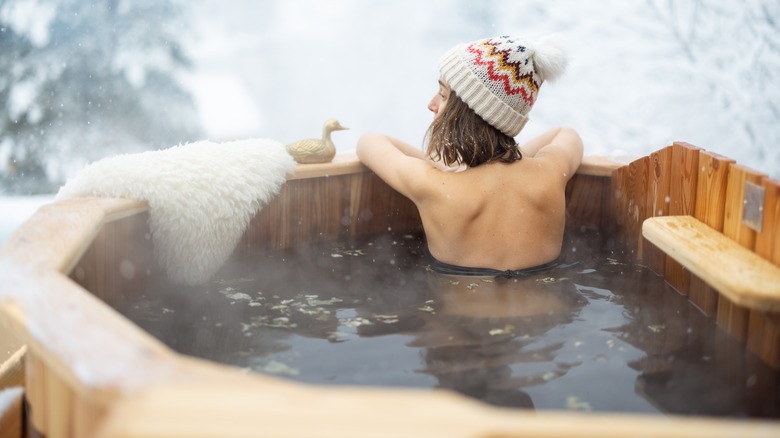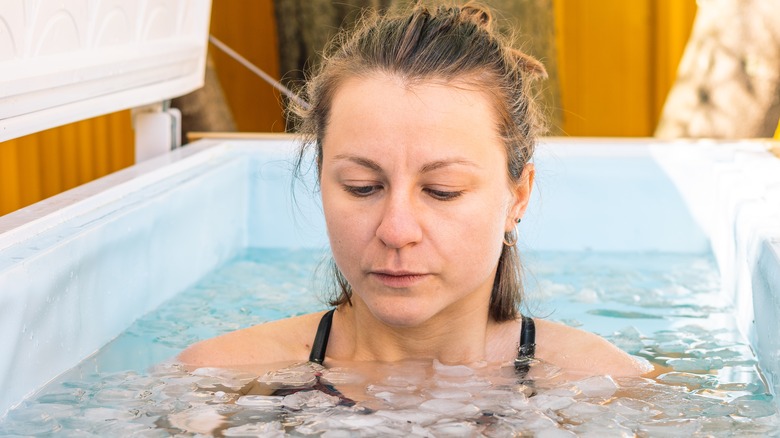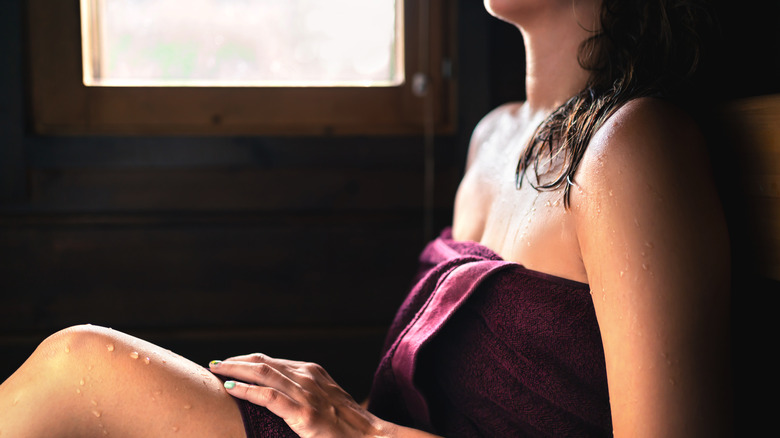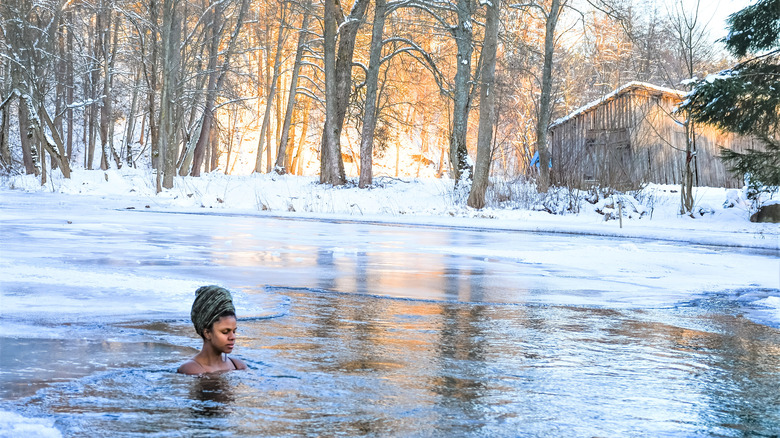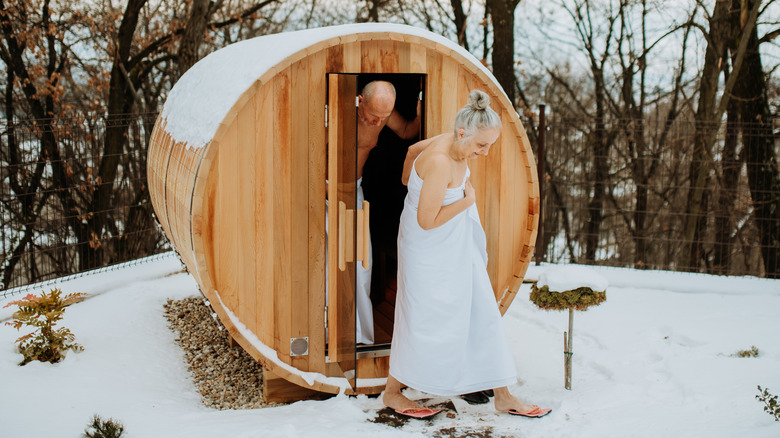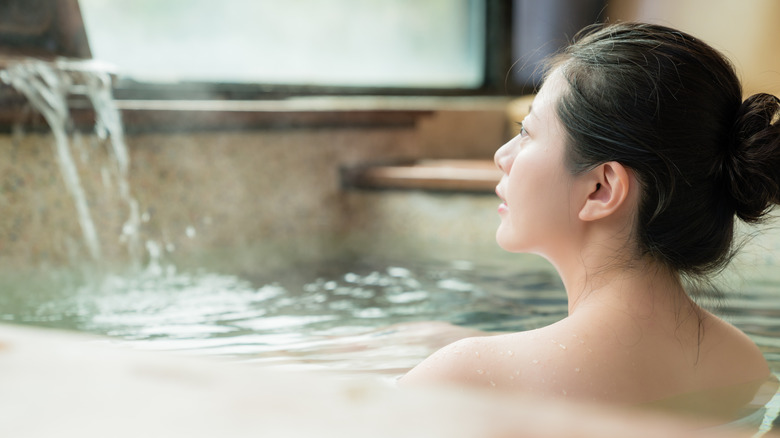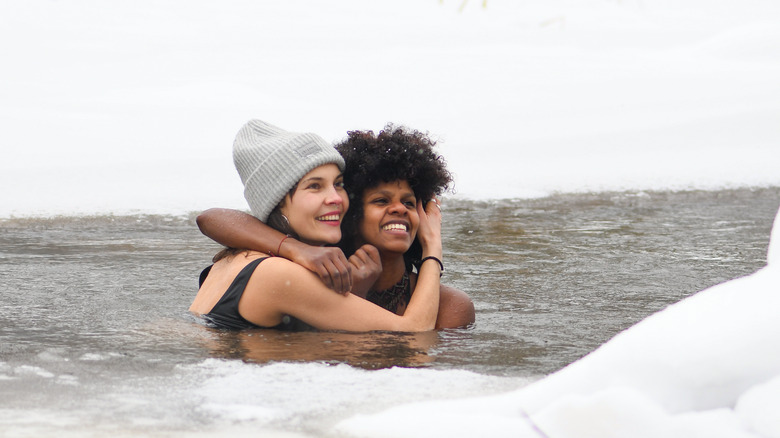Contrast Bathing: What Is It And How Can It Enhance Your Self-Care Routine?
If you aren't from a country like Finland, then you may think that contrast bathing, or contrast therapy, is a relatively new idea in the health and wellness industry. However, the Finns have long been using hot and cold therapy as a way of life for centuries through saunas and ice baths. According to Healthline, sauna is a Finnish word that means bath, or bath house. In addition to heat therapy from the sauna, many people in Nordic countries also include ice baths in their regular routine. Cold water swimming, or ice bathing, is a natural occurrence in these areas due to the vast amounts of bodies of water and cold temperatures.
Now, hot and cold therapies have made their way all over the world as a way to increase longevity, recover from exercise, and lower stress levels. If you are an athlete, you may already utilize some form of hot or cold therapy to recover. However, what if you are not an athlete, or don't do high-intensity workouts on a regular basis? Is contrast bathing for everyone? Here, we take a dive into why contrast bathing may just be the best thing for your self-care routine.
The science on contrast bathing
Contrast bathing is a type of therapy where you alternate using hot and cold temperatures in places such as saunas, steam rooms, hot tubs, and ice baths, and during cryotherapy — just to name a few. You soak your body, or the injured part of your body, in hot and then cold temperatures, repeating back and forth. This type of therapy has been shown to reduce inflammation, soothe sore muscles, and improve circulation.
So, how does it work? As reported by Healthline, when you quickly change from a hot water temperature to a cold water temperature, your blood vessels are forced to respond. Very hot temperatures will cause blood vessels to open up, while extremely cold temperatures will cause small blood vessels to get smaller. This pumping mechanism is thought to improve circulation throughout the body.
What temperatures are beneficial to contrast bathing? A research study published in "PLOS ONE" found that most benefits of contrast therapy were noted in cold water temperatures between 50-59 degrees Fahrenheit, and hot water temperatures of 95-113 degrees Fahrenheit. They also found that the time in each temperature mattered. They started with a hot water immersion of one to three minutes, followed by a cold water immersion of one minute, repeated for about 20 minutes. It was noted that you should always end the therapy session with a cold water dip.
Exploring heat therapy
Heat therapy, especially the use of saunas, has been studied extensively for the many health benefits it provides people of all backgrounds and body types. While a sauna is a form of dry bathing, it still provides a hot environment for your contrast therapy. A study published in "Complementary Therapies in Medicine" found that regular sauna users gained multiple health benefits from this type of heat therapy, including increased mental well-being, stress relief, and better sleep. Keep in mind that there are a couple of different types of saunas. Infrared saunas, as opposed to the more traditional wood cabin sauna, have emerged over the years as an excellent alternative if you have the choice.
Before you book your first session, there are a few things to know before you try an infrared sauna for your contrast bathing experience. Infrared saunas are typically cheaper, more efficient, and a lower-maintenance alternative. Because they heat up quicker, you will sweat much faster compared to a traditional sauna, thus cutting down on the time required to get those health benefits.
Saunas aren't the only way to enjoy heat therapy. As reported by MedicalNewsToday, steam rooms aid in muscle recovery, looser joints, increased circulation, improved skin health, and provide a relaxing environment. If a sauna or steam room isn't available, you can utilize a hot tub or soaking tub if the temperature can get hot enough.
Exploring cold therapy
While cold therapy may not seem as pleasant as a warm sauna session, the health benefits are just as vital. Cold plunges, swimming in icy lakes, and cold showers have been used for centuries as a way for people to heal sore and tired muscles after being on the battlefield or performing in athletic competitions. Now, we are starting to see more studies and research as to why icy water may be just what your mind and body needs. In fact, exposure to cold water has been shown to increase alertness, clarity, and energy, and release mood-boosting endorphins.
Another important fact about bathing in icy cold water at regular intervals is that it builds mental resilience. Submerging your body in freezing water, even if it's for only a minute, is not an easy task. It takes great mental fortitude to get past the shock of the freezing temperature, and then control your breathing through cold therapy. There are also many physical benefits. Regular cold water bathing has been shown to increase our immune systems, reduce body fat, and aid in muscle recovery.
Contrast bathing and longevity
At this point, there has been a lot of research and science proving that contrast bathing is good for our physical and mental well-being. However, new studies are shedding light on the impact that contrast therapy has on the aging process. In his book, "The New Rules of Aging Well," Dr. Frank Lipman discusses how contrast bathing slows down the aging process. When we slightly stress our cells by switching from one extreme temperature to another, we encourage autophagy. Dr. Lipman explains that autophagy is our body's self-cleaning and recycling system, which helps to protect us from disease. The autophagic process recycles the good parts of damaged cells into newer, healthier cells. This process is known as the "cellular fountain of youth."
Dr. Lipman also explains that exposure to cold temperatures can improve the production and health of the mitochondria in our cells. Mitochondria are known as the "powerhouse of the cell," and are essential to longevity. Our mitochondria are specifically responsible for turning food and oxygen into energy molecules found in the brain, muscles, and heart. By exposing our body to alternating temperature extremes on a regular basis, we are able to slow the aging process at the cellular level.
Tips and tricks for contrast bathing
While you may not have access to a sauna and freezing cold lakes, don't let that deter you from practicing contrast therapy in your home. If you don't have a sauna or steam room available to use, you can always fill up a tub with hot water or take a hot shower. The same goes for a cold plunge. In fact, all you need is cold running water in your shower, and you can start your contrast therapy now. It may sound unlikely at first, but there are many unexpected mental benefits of taking a cold shower. Utilizing short cold showers in your regular routine can help you increase energy, stay alert, decrease stress levels, and decrease inflammation.
If you don't have someone guiding you through contrast therapy such as a coach or a teammate, it can seem overwhelming. Many gyms and spas have saunas, steam rooms, hydrotherapy, and cold water therapy available to their members. If this is the case for you, ask the staff to help guide you through the session, or at least get you started. For many people, cold water plunges are too extreme and overwhelming. Try starting with just your feet or legs submerged in the cold water, each time try dipping further into the cold water than before.
Practicing contrast bathing safely
One of the biggest factors to safely practicing contrast bathing is knowing your body and what it can handle. Be aware that rapidly changing from extreme heat to cold temperatures may cause dizziness and lightheadedness, and there is also a small risk of fainting (via Pain Science). It's also best to avoid contrast therapy right after a fresh injury.
Utilize a thermometer in your water to make sure that you are at the proper temperatures recommended by your physical therapist or provider. You can also use a timer to help you gauge how long you have been in the water or sauna. When it comes to cold therapy, keep your sessions brief. There is no need to be in cold temperatures longer than a few minutes for you to receive benefits.
Always consult with your doctor before you try any contrast bathing, especially if you have any heart conditions, deep vein thrombosis, open wounds, or skin issues, advises Healthline. If possible, always practice your contrast bathing with a friend so that you can watch out for each other and motivate one another.
